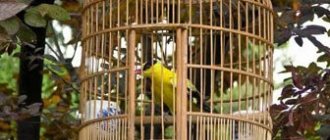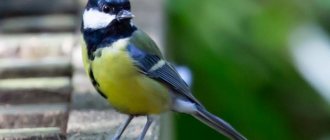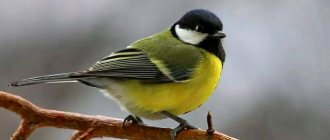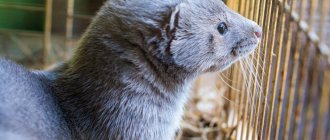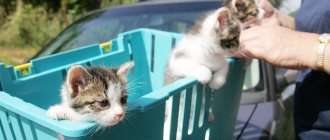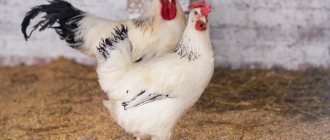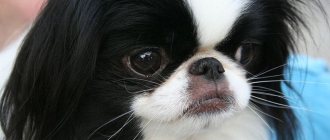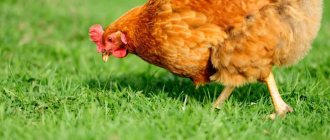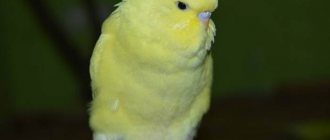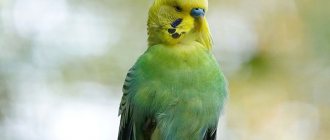Traditionally, songbirds were kept in Russian houses, regardless of the welfare of their owners. With the growth of megacities, this activity has not ceased to be common, and many people these days have feathered singers in their neighborhood. How to make the right choice? So that such coexistence brings joy to both you and the bird and does not cause any negative emotions? In this article we will try to answer the question of how to keep songbirds at home, and also help with the problem of choice.
Parrot
The first place is occupied by the most common pets - parrots. Their diversity is great in color, intellectual abilities, size and tameness. However, these tropical birds cannot tolerate drafts, low temperatures, or loneliness.
The most popular among parrots are:
- Budgerigars are friendly, curious, trainable birds. They are unpretentious in care, the basis of nutrition is grain mixtures and affordable fruits and vegetables. They become attached to their owner and love communication and games. The compact size of the wavy allows its cage to be placed even in a small room.
- Corella is the “golden mean” among the representatives of the family. It is characterized by increased activity, therefore it requires a more careful selection of the cage and its location in the apartment. Cockatiels are very sociable, remember a lot of words, imitate sounds, and learn easy tricks. The basis of nutrition is grain mixtures and various additives (fruits, vegetables, herbs).
- Lovebirds are the most romantic of parrots. Caring couples sweetly look after each other, are very sociable and active. Small body sizes require a large cage equipped with toys and perches. They are unpretentious in food.
- The cockatoo is a long-liver among parrots; with proper care, it will become a member of the family for 50 years or more. The bird's intelligence is high, as is its need for communication. Onomatopoeia, memorization and speech recognition come easily to him. However, this can be a significant disadvantage. Without proper upbringing, the cockatoo will become a tyrant at home. With its large and hard beak, it will damage furniture, things, and interior items. Outbursts of aggression, excessive irritability, loud screams and conversations of the bird are possible. The large size of the cockatoo requires a spacious enclosure and frequent walks around the apartment.
- Jaco is a nondescript looking but very smart parrot. They perfectly imitate human speech, repeat words and understand them. They require constant attention and communication, otherwise they begin to get bored and sad. They learn various tricks easily and with pleasure. It is important to properly raise a Gray from childhood in order to establish rules for living together. A Gray's cage needs a large one, with many crossbars, toys, and mirrors.
- The macaw is the brightest and largest among the parrots. Therefore, for normal maintenance he needs a full-fledged enclosure. A parrot's strong beak is both its tool and a problem for its owner. Birds can damage furniture and various objects. The bars in the cage must be steel and the frame must be strong, otherwise the macaw will quickly find weak points in it. He is very attached to his owner and can become stressed in his absence.
However, parrots are not the only domestic birds, although they occupy their rightful first place in the rating.
What birds are suitable for keeping at home?
What birds can you keep at home? Traditionally, small birds that tolerate life well in captivity are selected for such maintenance.
Signs of birds that do well in a cage:
- small size;
- thermophilicity;
- unexpressed need for long flights;
- unpretentiousness;
- love of communication;
- need for proximity to people;
- low desire to return to freedom.
Large predators should not be kept at home. It is difficult for them to get used to life in captivity. Some individuals are accustomed to a nocturnal lifestyle, others cannot live without hunting, and still others cannot live without long flights. At home, it is difficult to choose a suitable diet for large predators. Lack of proper nutrition and constant presence in a cage can cause the bird to become sick and die.
Tamed tit
What is needed to keep a bird in captivity?
What do songbirds need to keep at home? These requirements are different for birds that previously lived in the forest and for exotic pets.
For the forest
Forest birds for home keeping require the preservation of at least part of their former freedom, so a free aviary or a large cage is required for them.
What else will you need:
- a feed ration consisting of grain, soft food with protein and green fodder;
- communication - most of these birds are paired creatures that can get bored when alone;
- ventilated, bright room;
- the correct location of the cage - one side of it should look out the window, the other should lean against the wall;
- cover with a cloth at night to reduce sharpness from changing lighting;
- plants in a cage to create coziness;
- sticks of different sizes and sizes for sharpening the beak;
- sandy bed with pebbles of different sizes;
- bath for hygiene procedures.
Even though forest birds are not suitable for domestic living, if certain conditions are created, such birds can live well with people and delight their owners with their singing.
For exotic
Exotic birds for home keeping in apartments are very common. To keep your pets from getting sick and to be in a good mood, you need to create the necessary conditions for them.
What you will need:
- a cage of a suitable size;
- perches of different sizes;
- cloth to cover the cage at night;
- sippy cup and feeder;
- bathing container.
Accessories and cage for keeping birds
It is easier to keep exotic birds than forest birds. They have been bred for such maintenance for a long time, so they are more adapted to life in captivity.
Do you want Peking duck or musky duck?
Two varieties of ducks are popular among summer residents: Peking and Muscovy. It’s a shame, but you can breed Peking ducks only if your house is on the outskirts. Otherwise, there is a high probability of problems with neighbors: these birds are quite noisy. It’s a pity, because Peking ducks, especially broiler hybrids, are large, fatty and quickly gain weight.
If you want duck meat, but don’t want to argue with other summer residents, get musk ducks. They are also incorrectly called Indian ducks. These don't quack, but hiss, and then only if they get angry. But they have their own characteristics that are important to know.
Firstly, musk ducklings do not eat in the first days of life, and begin to eat only 3-4 days after hatching. Secondly, they need moving food, so you will have to sprinkle chopped boiled egg on an inclined board to make the crumbs bounce.
And finally, “Indochkas” grow more slowly than their Beijing relatives. Be patient - musk drakes can reach 7-8 kilos, a worthy result!
Chizh
Among the types of decorative poultry, one cannot fail to mention the inhabitants of Russian open spaces. For example, siskin. This bird was once very popular in Russia - this unassuming little bird with greenish-yellow plumage and black spots always delighted the inhabitants of the house in which it lived with its grace and lively character. The siskin is a bird slightly larger than a sparrow and with slightly brighter plumage. Its distinctive sign is a “cap” of black feathers on its head.
After the canary, the siskin is the first bird that is usually recommended for beginning bird keepers. She is very trusting, and she has good communication skills: even a siskin caught in the forest usually quickly stops running wild and can easily learn to fly out of the cage and, after “walking,” come back on its own.
The diet of the siskin is quite varied: in nature, this bird eats seeds of woody plants and small insects. Judging by the reviews, in captivity she is usually given a grain mixture that includes crushed sunflower seeds, oatmeal, fruits and seasonal greens, as well as finely grated carrots, crushed white bread crackers, ant eggs and, if possible, small insects.
The siskin's singing is not as masterly as that of some other feathered singers, but it easily adopts the trills of other birds and sings for about 10 months a year. It should be noted that male siskins sing and only in exceptional cases can females sing.
Tips for beginners
The chicks that have just emerged from the eggs are still weak and cannot maintain their body temperature on their own. That is why mother hens keep them warm by collecting them under their wings. You bought day-old chicks (turkey poults, goslings, etc.) - become a hen yourself. No, you won't have to carry your chicks under your robe like a hen (just kidding). Just place your kids in a box, which you place next to a radiator or under an electric light bulb.
Attention! Not all models of energy-saving lamps produce heat. If the light bulb does not heat up, the chicks under it will freeze. You can use hot water bottles as an imitation of “mother’s warm side,” but they will have to be changed very often.
The best food for day-old chicks is a finely chopped boiled egg. The pieces will have to be rolled in semolina so that they do not stick together. A day later, cottage cheese and finely chopped greens are introduced. Children are given water with potassium permanganate, very diluted to a pale pink hue.
For the first weeks, the babies live separately, and only at the age of 60 days can they be transferred to the poultry house. Until then, it is necessary to harden the chicks. They harden themselves with walks on warm days - in the garden or in the yard. Start with 15 minutes a day and gradually increase to 2 hours. But be careful! If the birds are clinging to each other, it means they are cold and it’s time to go home.
What kind of poultry at the dacha did you find interesting? Share your opinion in the comments.
Good luck!
Subscribe to site updates and our channel “Chicken” in Yandex.
See you later, colleagues! In the meantime, we will prepare new and interesting information for you!
Did you like our tips? Share with friends on social media. networks!
Oatmeal
This is a bird that does not require special skills in keeping, and is suitable even for a novice fan. The combination of bright yellow feathers on the head, belly and neck in combination with the brown feathers of the wings makes this bird elegant, and its complex but melodious song makes it attractive to its neighbors.
However, taming oatmeal is not so easy. As poultry keepers write in reviews, she is shy and will even sing at first only if she does not see a person nearby.
Oatmeal feeds on a regular grain mixture in combination with fresh fruits and herbs. You can also offer the bird various insect larvae.
Canary
The story about which types of ornamental poultry are most popular should start with this elegant bird. It traditionally occupies a leading position among lovers of domestic feathered singers. The canary got its name from its geographical homeland - the Canary Islands - from where it was first exported to Europe back in the 15th century.
Nowadays, many different feather colors of these birds are known - from bright yellow, which has become traditional during breeding, to white, brown, light brown and red. As a result of breeding work, canaries appeared with crests or special feather curls.
This one of the best birds to keep at home sings almost throughout the year, only with the onset of summer, when canaries begin molting, the songs of this singer (in canaries only the male sings, rarely the female) subside.
The canary is completely domesticated and is accustomed to being kept in an apartment. She will not require special care from her owner, but her health and singing abilities still depend on the conditions of her home environment.
The canary's cage, located in a lighted place, but not on a window or in a draft, should be spacious enough so that the bird can move freely, jumping from perch to perch. For group keeping of canaries (especially young birds), experienced poultry farmers advise using spacious enclosures.
Amadina
The zebra finch is one of the most popular ornamental birds today. It is often also presented as a songbird, but finches have a rather specific voice, and not everyone will like their song: finches make sounds that resemble buzzing, grumbling, whistling, chirping, and sometimes hissing. Moreover, they sing especially loudly and actively early in the morning. However, thanks to their variegated coloring, finches look very impressive and exotic; they are quite active and funny. Despite their apparent friendliness, finches do not accept human hands; they prefer to live side by side with their own kind - a large company or a couple. Therefore, finches are perfect for constantly busy and working people as a pet.
All Crimean news in one Telegram channel
Irina Gulivataya
Poultry farm vs bazaar
In the collective consciousness of Russian residents, the idea that one should go to the market to find low prices is firmly rooted. In fact, this has not been the case for a long time. Where are the real savings without sacrificing quality? At poultry farms!
It's all about the wholesale scale of production. Chickens, turkey poults and other chicks are hatched there in hundreds and even thousands. Why is pasta cheaper in a hypermarket than in a small store near your home? For the same reason, chickens are cheaper from the factory. And there are always the same prices, which are usually indicated on the website. And the seller at the market may demand more if you seem too trusting to him.
Only at a poultry farm you are guaranteed to be sold the desired breed or hybrid of poultry. Buying second hand is always a lottery. And even if you buy the same chickens or goslings from a poultry farm on the market from your car, you are already overpaying for space, delivery, etc.
If you nevertheless bought chicks at the market, do not immediately let them into the common poultry house. Let them undergo a 10- or 15-day quarantine in a separate room. If you introduce an infection, there is a high risk of death of the entire livestock. Be careful!
Basic rules of care
The purchased bird should be kept in quarantine for about a month, observed, and found out what food it prefers. If infections are detected, conduct an appropriate examination of the litter and carry out the necessary treatment, isolating the sick individual.
It is not recommended to place cages with birds near heating appliances; in houses with stove heating, hang them from the ceiling - this can be dangerous due to the accumulation of carbon monoxide at the top. In the warm season, the bird's house should be in the sun, but there should be shaded corners in the cage.
Cleanliness in the cage is an important condition for bird health . It is necessary to periodically clean out accumulations of dirt on the perch and tray and wash them with hot soapy water. And also be sure to monitor the cleanliness of feeders, drinking bowls and baths.
Pets do not like harsh sounds; they must be treated kindly and calmly. It is better to remove untamed birds from the cage with a special net, so they are less afraid. When the birds get used to their home environment, they can be periodically released to fly around the room. Such birds feel more comfortable, which has a beneficial effect on their health.
Feathered pets can become a source of positivity and joy and brighten up the leisure time of lonely people. This fascinating hobby brings you closer to nature, has a positive effect on the human psyche and brings all family members closer together. To begin with, it is better to buy an already tamed small bird, which will not experience stress in captivity and will bring its owner many pleasant moments.
Feedback from poultry owners
Owners of birds living at home note the following features of such a neighborhood:
- it is better to choose parrots or nightingales, canaries for home ownership - they are better adapted to life in captivity;
- It’s better to avoid predatory crows, magpies, and owls;
- caring for goldfinches and starlings is not difficult;
- Bullfinches are a very beautiful bird, but it is better to watch them from an apartment window.
The best birds for home are those that can get along with humans, do not require special food and do not have the desire to fly a lot.
Cell
The cage is the most important moment in the entire future life of your new ward, so its choice should be approached as responsibly as possible, which we will definitely do in the next material.
To begin with, you should know only the most important features of the choice. The cage should be reliable, safe and comfortable both for the bird itself and for you.
The best option is a stainless steel cage. It is very reliable and durable, easy to clean. And your pet will not be able to pick paint off the rods, diluting its diet with it.
As for size, everything is simple: a big bird needs a big cage. It is also worth remembering that there should be enough space inside for all the required elements: a feeder, a drinker, a perch, a nest box, a bathtub and several toys.
When choosing, it is better to neglect the beauty of the cell, giving preference to a simple rectangular high or wide “box”. The fewer decorative elements it has, the easier it will be to clean it.
An additional plus is the retractable pestle tray. It is very convenient to remove it, practically without disturbing the occupant, and is easy to clean.
And the last important point that is worth remembering at this stage: birds of different types and sizes cannot be housed in the same cage.
Guinea fowl breeding
Features of the bird. Guinea fowl are bred mainly for meat. It tastes like game, only more tender, juicy and lean. Birds are highly productive. The yield of the edible part of the carcass is greater than that of chickens. An adult reaches a weight of 1.5-2 kg. The live weight of females is greater than that of males.
Birds lay up to 200 yellow or yellowish-brown eggs with an average weight of 40-45 g. Thanks to the strong shell, they do not spoil at temperatures of +2...+5 °C for three to four months. Most often, guinea fowls fly in secluded places. If you keep them in an enclosure, they produce fewer eggs, but quickly gain weight.
These birds prefer to stay in a flock. Although they get along well in the company of chickens, geese, and turkeys. Only guinea fowl are much more energetic and mobile. At the same time, they are very shy. In response to loud sounds, the approach of strangers or animals, they emit piercing screams and try to fly away from the source of potential danger. In order not to look for guinea fowl later in neighboring properties, they are given a quiet place, fenced with a high net, or their wings are partially clipped. The same people should feed the guinea fowl.
Conditions of detention. These birds do not need any special privileges. In the warm season, they can walk for days on the lawn or in the garden. Guinea fowl effectively improve the health of garden beds by eating Colorado potato beetles, caterpillars, snails and other pests. However, they do not trample plantings like chickens, since they do not have the habit of raking the ground.
In order for birds to peck Colorado potato beetles, it is enough to add them to the food for several days. Having quickly gotten used to this additive, guinea fowl themselves vigilantly look for and eat beetles. So free range allows you to significantly save on feed and rid your garden of pests for free.
In a pen, guinea fowl feel calmer if it is partially covered with a canopy, and inside there is a pile of sand or a trough with ash and at least a couple of bushes. Birds love to hide in them. A closed enclosure must be protected from bad weather by a continuous canopy.
Guinea fowl can be kept both in a small farmstead and on a large farm.
Diet. Birds are unpretentious in their diet. In addition to insects, they willingly eat herbs, roughage, chopped vegetables and fruits. Plant food should make up 60-70% of the bird's diet. Greens are especially needed.
Summer keeping of guinea fowl on the range is extremely profitable economically, since they require a minimum of additional nutrition. But from late autumn to spring, wet meat waste, blood meal, fermented baked milk, cottage cheese, grain and fish oil should be added to the feed. Feed costs are 3-3.5 kg per 1 kg of weight gain. With adequate nutrition, guinea fowl lay eggs all year round.
It is important to strictly follow their feeding regime. Then they will independently return home at a strictly defined time. Otherwise, the birds will no longer recognize their owner and may go wild.
They must always have clean water. In hot weather, they drink it in large quantities, otherwise they may get heatstroke.
Bird breeds. There are many varieties of guinea fowl. These are white, speckled, blue, black, fawn, purple, cream individuals. In our country, the most popular highly productive breeds are:
1. Zagorskaya white-breasted. The plumage is gray, the breast and belly are white, without inclusions. There is no feathering on the head and neck. The live weight of the female is 1.7-1.8 kg, the male is 1.8-2.1 kg.
2. Siberian white. Birds are distinguished by high egg production: up to 115-120 eggs per year. The plumage is white or matte milky. The weight of a guinea fowl is about 1.6 kg, and that of a guinea fowl is 1.8-1.9 kg.
Chick survival rate is more than 95%.
3. Gray mottled (or silver-gray). It features delicious dietary meat. The weight of the female is 1.5-1.6 kg, the male is 1.7-1.8 kg. Egg production – 87-90 eggs per year.
Bird breeding. Experts recommend that beginners purchase 3-5-day-old chicks from experienced breeders in mid-spring. There should be 5-6 females per male. Otherwise, some of them may remain unfertilized, since males are very picky in choosing girlfriends for mating. The minimum quantity is 18-20 chickens. Guinea chickens must be healthy, without wounds or bare skin. Chicks can be released for walking as soon as they reach 15-20 days of age.
But more often than not, exotic bird breeding enthusiasts incubate eggs and raise chicks themselves. Unfortunately, adult guinea fowl are bad hens and mothers. Due to an acute reaction to any noise or the appearance of unfamiliar faces, they constantly leave the nest. Therefore, their eggs are often placed under chickens or turkeys.
In the incubator, chicks are born 27 days after the eggs are laid. Guinea fowl are fed in the same way as chickens.
Diseases. Guinea fowl are strong birds with strong immunity. But if they are poorly maintained, they can get sick.
1. Infectious diseases: pasteurreliasis, pullorosis, Marek's disease (neurolymphomatosis), mycoplasmosis, trichomoniasis, tuberculosis, salmonellosis.
2. Non-communicable diseases: gout, dyspepsia, rhinitis, vitelline peritonitis, omphalitis.
3. Parasitic diseases: helminths, fleas.
Benefits of breeding guinea fowl. They:
● provide tasty dietary meat, more tender than turkey;
● lay 90-160 eggs of high nutritional value all year round;
● do not need specialized feed, vitamins, premixes;
● they get their own food while walking, and in the evening they return to the poultry house;
● are garden nurses;
● perfectly tolerate unfavorable climatic conditions, surviving in the temperature range from -50 to +45 °C;
● rarely get sick;
● get along well with other pets;
● give offspring with very high survival rate (unlike chickens).
Corella
Perhaps you want a bird that is larger than a finch or budgie. In this case, think about purchasing a cockatiel.
They are songbirds, but their chirping does not reach nearly intrusive levels, especially when compared to larger birds. They can be taught to whistle, imitate sounds around the house, and spend their days whistling their favorite tunes.
View overview
LENGTH : 30-33 cm
WEIGHT : 85g
PHYSICAL CHARACTERISTICS : gray body; yellow face and crest; orange cheeks; long ponytail; Albinos, motley and brown individuals are often found in their population.
Black-headed goldfinch
And this bird is also a common inhabitant of Russian forests, groves, gardens and parks. Like the canary and the siskin, it is a representative of the large family of finches. The goldfinch's repertoire is almost as diverse as that of the canary, although it has its own unique features. The main difference between these birds is that not only male goldfinches can sing, but also females. Moreover, they do it even better than males. So for home keeping it is usually recommended to take it. Poultry farmers often note in their reviews that rather sharp, unpleasant sounds sometimes creep into the trills of these birds.
Among the names of birds with a description of their appearance, without a doubt, the goldfinch is especially noticeable. This is a very elegant bird. Its plumage combines red, yellow, white and black. However, this bird is slightly smaller than a sparrow, so in natural conditions you will not immediately notice it among the foliage.
It should be borne in mind that a goldfinch that is caught and not bred in captivity takes a long time to be tamed, is shy of humans, and does not immediately begin to sing in a cage.
